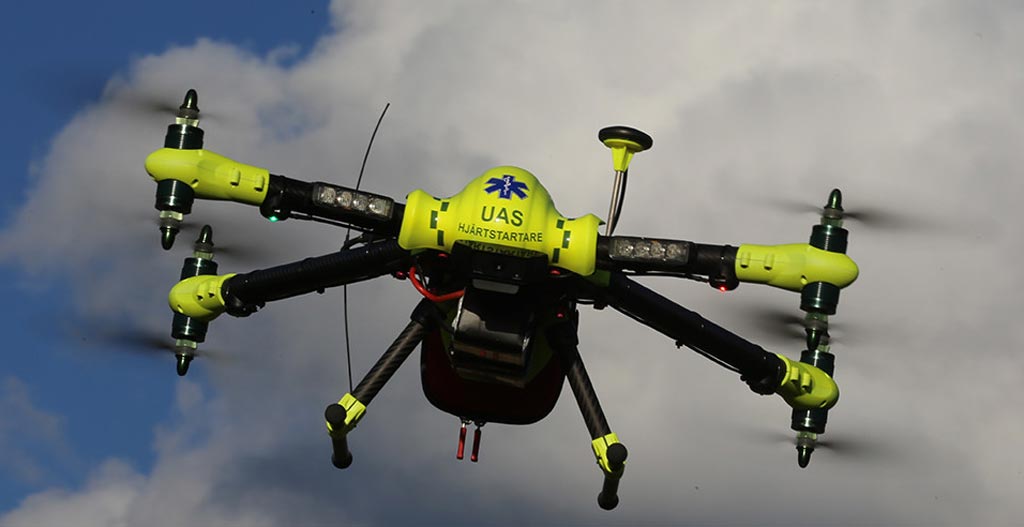Drones Can Increase Cardiac Arrest Survival

Image: Swedish EMS services may soon send drones before ambulances (Photo courtesy of Karolinska Institutet).
A specially constructed drone equipped with a defibrillator can be delivered automatically to the site of a cardiac arrest long before an ambulance arrives, according to a new study.
Researchers at Karolinska Institutet (KI; Solna, Sweden) and Stockholm South General Hospital (Sweden) conducted a field study of a defibrillator-equipped drone that was developed in partnership with FlyPulse. The drone was automatically dispatched and flown to the exact destination to which an ambulance had been driven on 18 incidents of cardiac arrest between 2006 and 2013 in the Norrtälje municipality in Sweden; their respective arrival times were then compared.
The drone was flown out of pilot view within a radius of 10 km from the emergency medical services (EMS) station in Älmsta (Norrtälje municipality). The results showed a response time from initial alarm to being airborne of only three seconds, and an average time from alarm to arrival at the scene of cardiac arrest of approximately five minutes, a full 16 minutes shorter than was stated in the ambulance records. The study was published on June 13, 2017, in the Journal of the American Medical Association (JAMA).
“In areas with longer ambulance response times of up to 30 minutes, the chances of surviving a cardiac arrest are tiny,” said lead author paramedic Andreas Claesson, RN, PhD, of the KI center for resuscitation science. “Drones able to deliver defibrillators can reach the patient inside the first few minutes and are thus a new and important complement to existing emergency services. With an early shock from a defibrillator within the first 3-5 minutes after cardiac arrest, up to 70% of patients can survive the event.”
The automatic external defibrillator (AED) used for the study was the Schiller FRED Easyport, an external defibrillator that weighs just 490 grams but still meets all requirements of a modern AED. The pocket-sized device uses multipulse biowave, a myocardium-saving biphasic impulse at energies of only 90 and 120 joules, which causes much fewer ST alterations and triggers significantly less creatine kinase and myoglobin in the blood.
Story Credit: https://www.hospimedica.com/critical-care/articles/294769858/drones-can-increase-cardiac-arrest-survival.html


